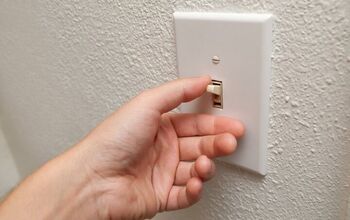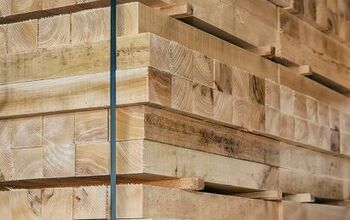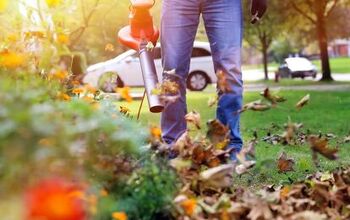Tips For Picking The Perfect Pumpkins And Squash This Fall

Fall marks not only the end of unbearably hot weather, but also the start of pumpkin season. In addition to pumpkin spice everything at your local markets and cafes, fall is a season where you find fresh pumpkins and squash in nearly every grocery store and garden center. With so many of these iconic fall vegetables to choose from, you may find it difficult to choose the perfect pumpkins and squash to bring into your home.
To find the perfect squash and pumpkin for your home, have a vision and aesthetic in mind. While searching for fall squash, avoid ones that are cracked, split, or blemished. Feel for soft spots, as they are a sign of rot, and inspect the stem to ensure it’s strong. Perform the thumbnail test to check for freshness, and buy local produce whenever possible to ensure freshness.
Pumpkins and other fall squash make for amazing decorations, and they are essential ingredients for many tasty seasonal recipes. Picking the best pumpkins and squash for your doorstep or Thanksgiving pie or casserole, however, can be a challenging endeavor. Luckily, there are many easy ways to rule out inferior produce, and ensure you pick the perfect pumpkins and squash every time.
13 Tips For Buying The Best Pumpkins And Squash This Fall
1. Have A Vision And An Aesthetic In Mind
With so many squash varieties, it’s wise to have a vision of what you want to bring into your home. This will help prevent you from becoming overwhelmed, and ensures you will buy the correct types of pumpkins and squash.
Furthermore, a focused search can help you narrow your gaze and inspect each pumpkin and squash thoroughly. There is nothing wrong with buying a few impulse squash and gourds, but try to have a pumpkin shopping list and vision board before you head to the market.
2. Inspect The Stem
As you sift through the piles of pumpkins and squash in local markets this fall, remember to look at the stem. You'll want the perfect size and shape for your pumpkin, but the stem reveals more than you might think.
Look for a stem that is firm and healthy. Typically, it should be thick and green or dark in color on most pumpkins. If a squash stem is soft, discolored, or withered, this is a red flag. A soft stem can mean decay, and is a sign that the squash is not fresh.
3. Look Closely For Damage And Discoloration
As you search for the perfect pumpkins and other fall squash, it’s important to patiently look at the details. When you find a squash you like, pick it up and inspect it for problems.
First, look for signs of damage. If the squash you like has bruising or scratches that penetrate beneath the skin, put it down and find another one. You should also look for discoloration or other deformities. If you don’t look closely at each squash, you may not notice these issues before it’s too late.
4. Feel For Soft Spots
Another great way to find the perfect pumpkin is to search for soft spots. When you find a pumpkin or squash you like, remember to press firmly around the entire surface. If there are any soft spots, even small ones, you shouldn’t buy the pumpkin.
If the surface of a pumpkin or squash is soft, it’s a sign of internal decay. There’s a strong possibility that a soft pumpkin will rot within days.
5. Perform The Thumbnail Test
One helpful trick to finding the freshest pumpkins and squash is to perform the thumbnail test. Press your thumbnail to the outer shell of a pumpkin or squash and apply light pressure. Your nail should not penetrate the skin easily.
If your nail easily penetrates the pumpkin, there’s a good chance the produce you are holding is no longer fresh. A fresh pumpkin should have a thick and strong exterior, which is a sign it will stay fresh for longer.
6. Check For Cracks And Splits
In addition to blemishes and soft spots, also look for small cracks and splits on the outside of a fall squash. Split skin on pumpkins and other squash is more common than you might think.
Cracks and splits can occur during transportation or as a result of rapid and accelerated growth. You never want to buy a split pumpkin, as these exposures leave the inside vulnerable to disease and rot. Only choose fully intact pumpkins, with no exposed flesh.
7. Opt For A Variety Of Pumpkins, Squash, And Gourds
In pursuit of the perfect squash this fall, try to keep an open mind. With so many different types of gourds and squash to choose from for cooking and decoration, it’s best to select a variety.
Instead of buying one type of pumpkin, choose a few varieties based on color, shape, and flavor. Remember that gourds and certain squash varieties can last for months, so consider adding them to the mix for long-lasting outdoor fall decorations.
8. Heavy Is A Good Sign
Sometimes a fall squash appears perfect on the outside, but it’s not developed within. While you can’t see inside pumpkins before buying them, you can get a good idea based on their weight. Generally, you want a fall squash to feel heavy rather than light.
If the pumpkin or squash you pick up feels suspiciously light, this is a red flag. Light pumpkins are often a sign of underdevelopment. You wouldn’t want to cook with these pumpkins. Keep in mind, however, that some pumpkin varieties are naturally lightweight.
9. Pay Close Attention To The Bottom (Blossom End)
Even though you rarely see the bottom of a pumpkin, the “blossom end” can tell you a great deal about its health. It’s natural for there to be some discoloration on the bottom of a pumpkin, but it should still look healthy.
If there are any signs of decay or abnormal discoloration around the blossom area, then you should put it down and continue your search for the perfect squash.
10. Research Which Varieties Will Last Longest In Your Climate
Not every squash thrives in all climates. If you plan to use a pumpkin or other type of fall squash as outdoor Halloween decorations, you must select a variety that will last in your climate. Typically, pumpkins with naturally thick skins last longer in warmer climates.
11. Choose The Correct Squash For Your Intended Use
There are many uses for fall squash. You can carve pumpkins, cook them, and display them around the home. While many fall squash are versatile, you must always choose the best squash for your intended use.
If you plan to display your squash outdoors, then opt for a variety known for its longevity. If you want to cook with it, opt for a pumpkin or other type of squash known for its flavorful flesh.
12. Buy Locally Grown Whenever Possible
If you live in a cooler climate where fall squash grows in abundance, source your pumpkins and squash locally. When you buy local, you not only support your local farmers, but are also more likely to find the freshest produce.
Locally-grown pumpkins and squash are usually freshly picked, rather than stored for weeks. This usually means your squash will last longer and taste better.
13. Buy In Stages Rather Than All At Once
If you love decorating your house with squash and gourds, and cooking festive fall cuisine all season long, then purchase your produce in phases. If you buy all your squash and pumpkins at once, they will peak early.
Buying in phases and at various locations allows you to pick the best squash that is fresh at the moment. This guarantees beautiful and delicious pumpkins and squash that will last throughout the season.
Final Notes On How To Pick The Perfect Pumpkin This Fall
Pumpkins and fall squash are emblematic of autumn and its holidays. This seasonal produce is used in cooking and decoration, and while you can buy it everywhere, finding the perfect pumpkins and squash can be challenging.
When selecting the perfect fall squash, check for blemishes, cracks, and soft spots. Look for heavy pumpkins, and ensure the stem and blossom end are firm. Purchase local fall produce whenever possible, and opt for varieties that will thrive in your climate.
Related Guides:
- Top Fruits And Vegetables To Grow To Save You Money On Groceries
- 12 Amazing Vegetarian Holiday Meal Ideas
- Different Gourds You Should Grow, And How To Use Them

Tom Gaffey is an expert writer who currently resides in Washington D.C. Tom has a passion for real estate and home improvement writing, as well as travel and lifestyle writing. He lived the last twelve years in Hawaii where he worked closely with luxury resorts and event planners, mastering his knowledge of aesthetics and luxury products. This is where he found his passion for home improvement and a keen interest in DIY projects. Currently, Tom resides in Washington D.C, and also working on his debut fiction novel.
More by Tom Gaffey



























